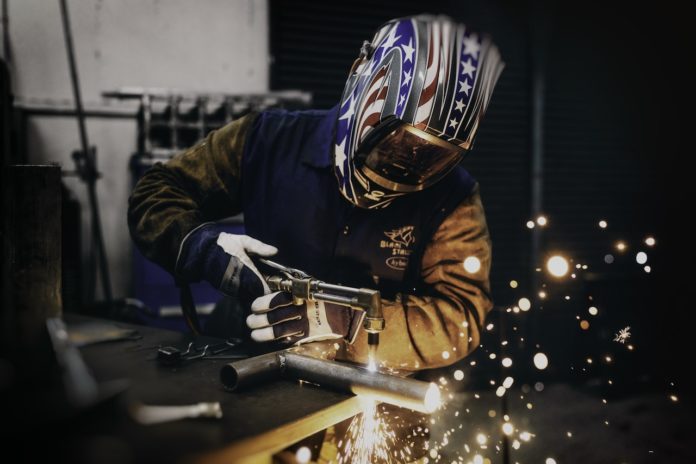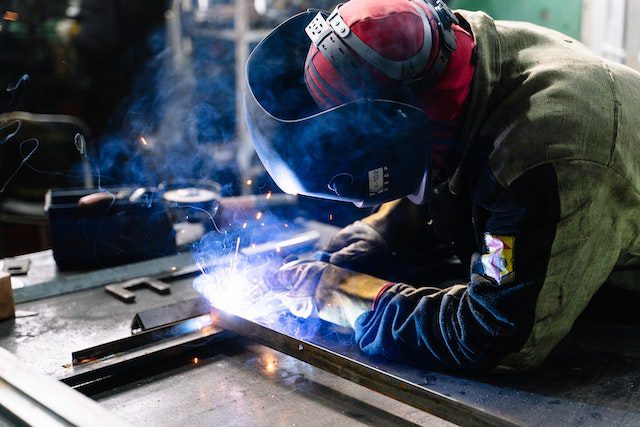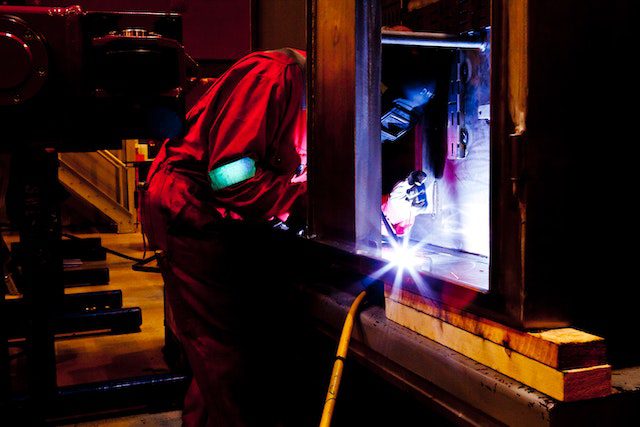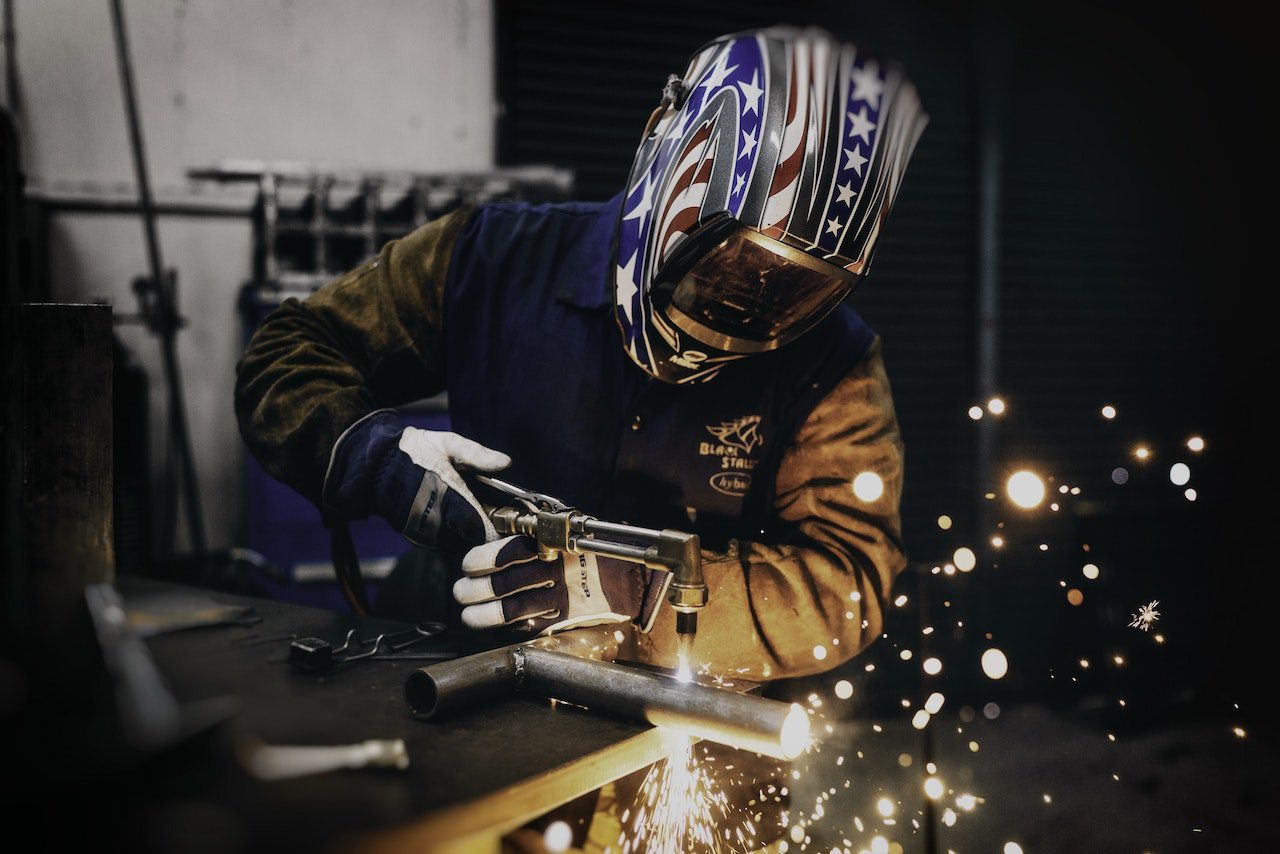Whether you are working in your home workshop or a large factory, welding poses several potential hazards to the welder and those around them.
Therefore, safety is critical. Learning to protect yourself and those around you from these potential hazards starts with being aware of these risks and how to mitigate them. Welding safety is facilitated by:
Protective gear. Wearing protective gear is the first step in preventing accidents as you weld. The correct protective gear allows you to move around freely while protecting you from burns, injuries, and rays. Your clothing should be free from any flammable chemicals when welding. You should wear long-sleeved shirts, gloves, pants, and boots. If you are searching for welding boots and other protective gear, you can find what you need here.
Proper training. Everyone who welds should receive appropriate training on the welding process and equipment. Welding is a risky business, and training will help you know how to properly use the equipment and correctly apply the various welding techniques. Guidelines should be followed to prevent these hazards.
Equipment inspection. Before using your equipment, it is important to ensure everything is okay. Inspect gas and fuel cylinders for any leaks, and check to see whether the equipment being used is up to code.
Potential Welding Hazards
Now that we have seen how we can protect ourselves when welding, let us take a look at the potential hazards faced and how to mitigate them.
Fire and Explosion Hazards
Welding poses fire and explosion hazards. A welding arc can reach 10,000 degrees Fahrenheit, and though these temperatures are high, the main risk is the surrounding area. The spatter from the arc can reach 35 meters from it. If you are working on a platform, ensure no one and no flammable material is below you.
To prevent fires, ensure there are no flammable materials such as oil rags, gasoline, oil, paint, gas, cardboard, or paper around you. Know where the fire alarm is in a workstation and keep a fire extinguisher close by.
If you will be within 35 feet of the flame, ensure you have a firewatcher around to track sparks and fire-resistant material like a fire blanket.
As mentioned above, inspect gas cylinders to ensure there are no leakages that can lead to explosions.
Electrical Hazards
Arc welding involves live electrical currents, which can lead to electric shock or electrocution. This is a serious risk as it can lead to serious injury and death. When working with electrodes and metals, use protective gloves and avoid touching them with your skin or wet clothing. Insulate yourself as you work.
Also, inspect your electric equipment to ensure there are no loose wires and that the welding cable and electrode holder are properly insulated. If anything appears damaged, repair or replace it before use.
Even when not in use, stick electrodes are still hot, and touching them can cause electric shock. Do not attempt to repair your electric equipment unless you are a qualified technician or properly trained. Removing the cover of the welder is a risk as some have residual electric energy.
Radiation Hazards
Electromagnetic energy can possibly cause radiation if there is continuous exposure. This radiation can be in the form of ultraviolet rays from arc welding. These rays can result in what is known as arc eye or welder’s eye, which may present as irritation, intense eye pain, bloodshot eyes, or sensitivity in the eyes.
To prevent this, wear protective glasses or helmets with the proper filter shade. You can also use a screen or curtain when working. You can also use UV side shields that protect the eyes and face from debris from the welding process.
Fumes and Gases Hazards
Continuous exposure to welding fumes and gases poses respiratory health risks. Materials such as stainless steel have been known to produce toxic fumes, and there is evidence that welding fumes raise lung cancer risks.
To avoid inhaling these fumes, wear a respirator and keep your head away from the fumes as you work. Ensure that you are working in a well-ventilated room. Wipe down the metal you are working with to remove any oils or chemicals that can vapourize and produce toxic fumes.
Noise hazards
Noise pollution is usually dismissed, yet it is harmful. Welding can be a noisy activity. If you are a consistent welder, you are constantly surrounded by loud noises. Noise levels above 85dB² are considered harmful. Welding processes such as air carbon cutting can reach 120 dB.
To prevent hearing impairments, use earmuffs or fire-resistant foam earplugs as you work.
In Summary
Keep yourself protected at all times when welding. Do what you can to prevent the hazards mentioned above. Wear the right protective gear and do it correctly. Inspect your environment before working and pay attention to all the safety guidelines indicated.





